Green Bay's reading levels continue to remain low in its schools, especially those trying to learn English. But there is a solution.
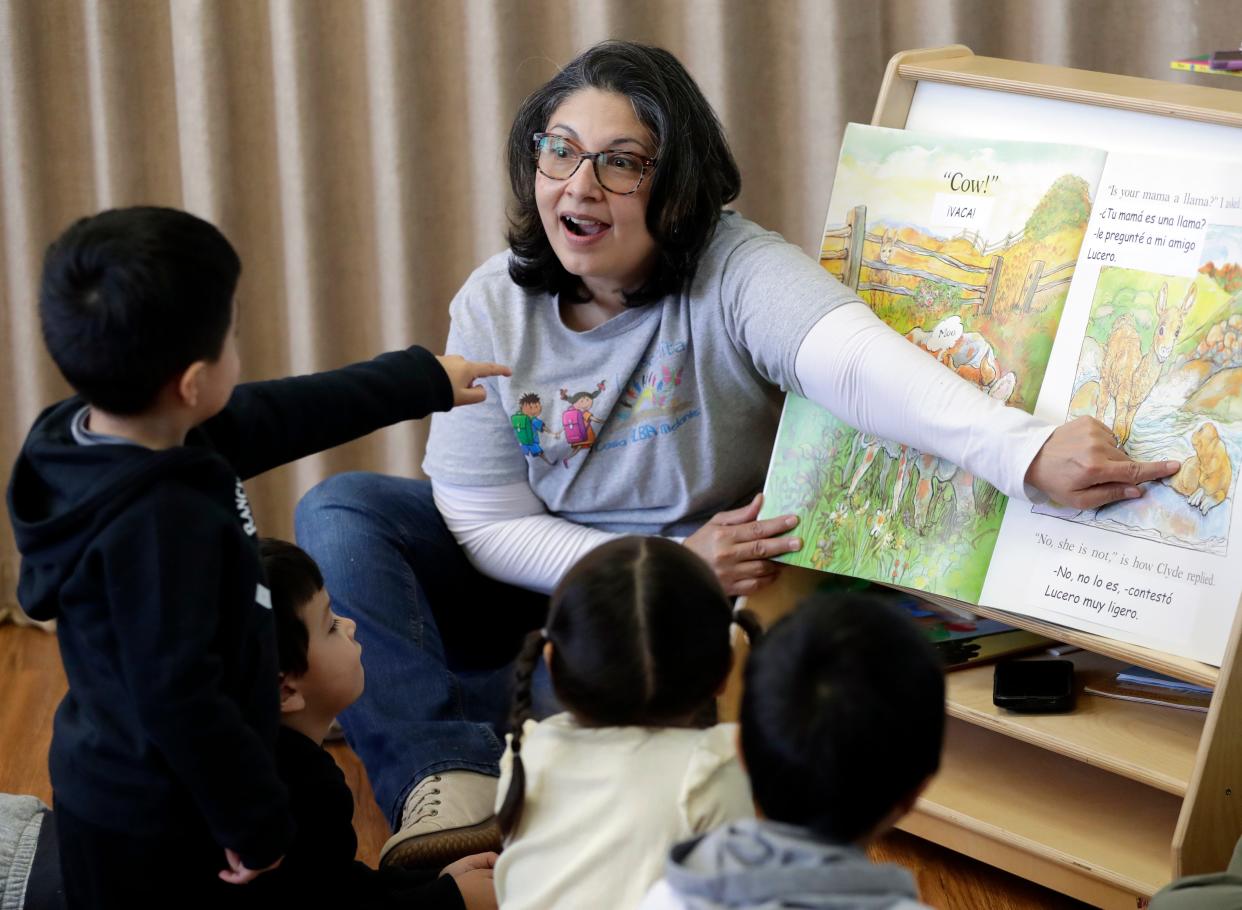
Editor's note: With low reading proficiency scores across the state, USA TODAY NETWORK-Wisconsin is exploring the causes and consequences of low literacy. This article is a part of the By the Book series which examines reading curriculum, instructional methods and solutions in K-12 education to answer the question: Why do so many Wisconsin kids struggle to read?
GREEN BAY ― Every week at Grace Lutheran Church on South Madison Street, Elizabeth Amezquita and her 3-year-old daughter, Julia, sing songs, read books and practice letters ― in Spanish and English.
At La Escuelita, the only bilingual Spanish early literacy program of its kind in Green Bay, young bilingual speakers learn the basics of literacy through play and family time.
The program, run by Casa ALBA Melanie, is tackling a pervasive problem in the Green Bay area: low reading proficiency and a lack of access to reading materials in languages other than English.
Third-grade reading scores in the Green Bay Area Public School District are low across all groups. Before the pandemic disrupted learning for over a year, just 27% of third-graders were reading proficiently, according to state test scores.
For students who are considered to be English Language Learners, those scores are even lower. Pre-pandemic, about 12% of third-grade ELL students scored proficient on the English Language Arts section of the state Forward Exam.
A critical way to help young readers build literacy skills, and possibly get those scores up later on, is to practice reading in whatever language they prefer to speak in, according to Cory Mathieu. She is an education professor at the University of Wisconsin-Green Bay who specializes in bilingual education.
Students in the Green Bay School District speak 31 different languages, and over a fifth of the students are considered to be ELL. These students could be learning English either as a second language or they could be multilingual students learning English while they’re also developing skills in another language.
Demographically, about 32% of the district's student population is Hispanic, 40% is white, 9% is Black and 8% is Asian.
Survey:Let me know what you think I should be covering
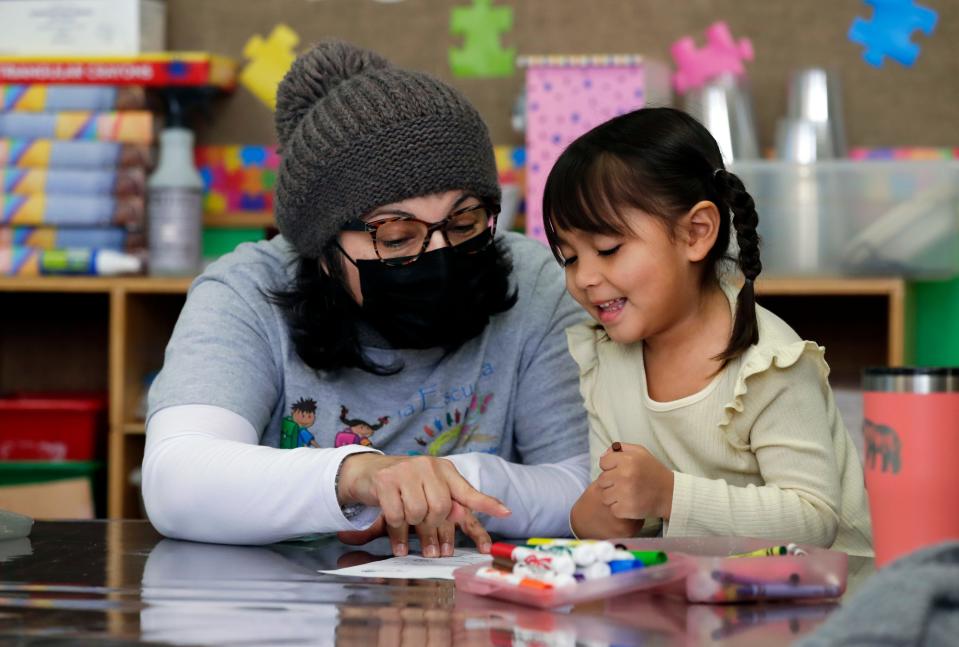
The Green Bay School District has ELL programs for students learning English, and five of the schools in the district have bilingual Spanish and English programs. At Baird, Jackson and Wilder elementary schools and at Edison and Washington middle schools, students in kindergarten through second grade receive 70% of their instruction in Spanish and 30% in English. From third to fifth grades, it flips.
Research says it’s best for families to practice reading with their preschool and elementary-aged students in whatever language they primarily speak.
But accessing reading materials in languages other than English isn’t easy in the Green Bay area.
Spanish books are most easily available at local libraries and within the school district, with both authentic and translated works for elementary-aged readers. But even at La Escuelita, the instructors often make their own bilingual materials because it's hard to find them.
When it comes to other languages, like Somali, Chinese or Hmong, those books are a lot harder to come by, according to local librarians.
“Overarching, we try and represent those students of those cultures that we have, also knowing that sometimes it's really hard to get some of those books,” said Raquel Rand, the Green Bay School District library media coordinator.
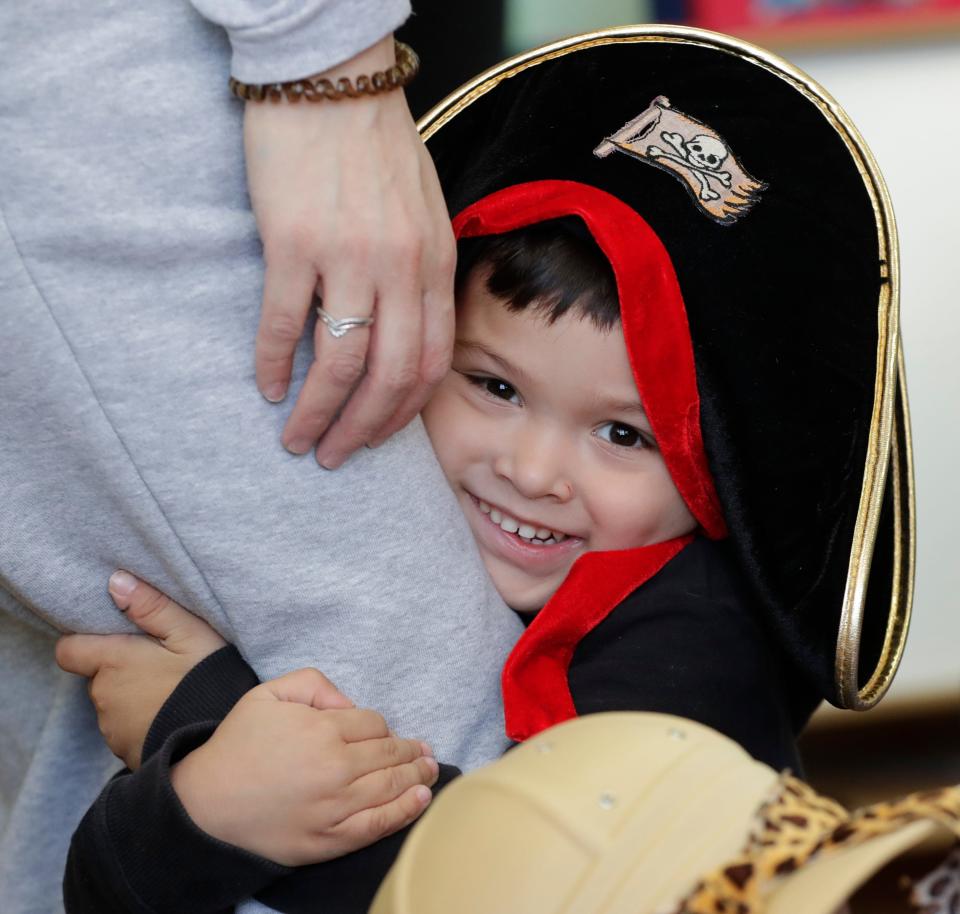
Getting books in other languages 'is a lot trickier' in the Green Bay School District
For Spanish, Rand has ordered books from Mexico to get authentic texts since getting books in other languages in the United States can be difficult.
One challenge for getting books in languages other than English is what U.S. publishers are putting on the shelves.
“Some of those books in other languages, here in America, we really don’t publish a whole lot of those,” Rand said. “So trying to get those books from other countries and other publishers is a lot trickier.”
Even when texts from other countries are available, getting them can be expensive, especially when factoring in shipping costs.
“It's a hard balancing (act) of how you support (students) while also making sure that you're using your limited funds wisely,” she said.
More:Six months after landing in Green Bay to report on education, here's what I've learned.
More:Should your child take AP or IB classes? It could save them thousands in tuition.
This year the Green Bay School District is getting about $1.4 million in library aid to purchase reading materials, according to the Department of Public Instruction. Across the 41 schools, that's about $34,000 per school, but Rand said each building determines how much of their funding will go toward bilingual books. No standard amount or percentage is dedicated to those materials.
At the Brown County Central Library in downtown Green Bay, there is an entire section in the children’s reading materials dedicated to Spanish books for young readers. There are picture books just in Spanish, as well as bilingual books in both Spanish and English.
The library also has chapter books for older readers that are translated from English, with titles like "Diary of a Wimpy Kid" and "Harry Potter and the Sorcerer's Stone" — or in Spanish, "Diario de Greg: un renacuajo" and "Harry Potter y la piedra filosofal."
It's easiest to get reading materials in Spanish, French and German, said Clare Kindt, the collection development manager for Brown County Library.
For other languages, it becomes more difficult, especially ones that are originally written in that language instead of translated from English, she said.
Rand said books in other languages are concentrated at the schools where that particular student population is largest. But the district’s libraries have a lending program so schools can share book collections.
More:A new Green Bay mural just dropped: Boys & Girls Club kids unveil 70-foot wall of equality
More:Green Bay West's all-female STEM group introduces girls to science and health care, breaks barriers
The diversity of languages spoken in the district is nothing new and has actually decreased since 2016 when 42 languages were spoken within its schools.
Rand said the availability of books in other languages and budget constraints are the main reasons why the district doesn't have many books in other languages.
While the school district isn’t necessarily focusing on growing the reading materials it has in other languages, it does make a concerted effort to ensure all families are represented in the content of the books, Rand said.
“One of our goals right now is to really make sure that our books are diverse, but not necessarily in the other languages,” she said.
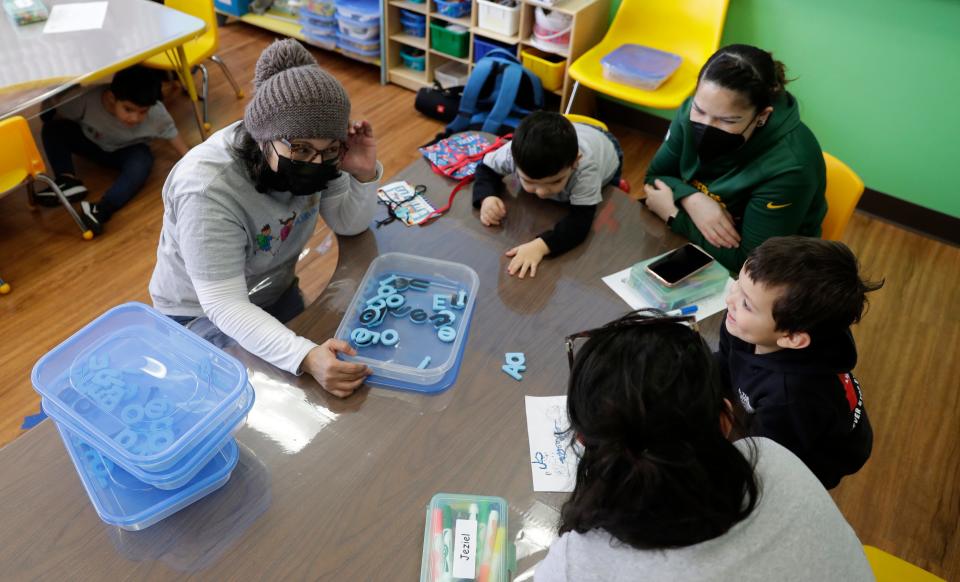
Why it’s important for kids to read in their preferred language
Regardless of what language a child or family speaks, research has shown for decades that having kids practice reading skills in their preferred language is the best way for them to learn how to read.
A preferred language is exactly what it sounds like: the language someone prefers to speak. While someone may know two or three languages or have grown up speaking multiple languages, their preferred language is the one they choose to interact in.
Reading ability and building foundational literacy skills are strongly tied to oral language, Mathieu said.
“Some of the main (reasons) that parents should work with their children in their preferred language is that oral language, our spoken language, is directly tied to our ability to read and write,” she said. “Students are developing oral language first in their preferred language, and so if we are doing those initial literacy skills in that preferred language, we’re strengthening and using that resource they already have in their oral language.”
It also creates more opportunities for families to engage with their child and help them build vocabulary and understand phonics ― the concept that written letters are connected to specific spoken sounds.
“If we tell them that, ‘Oh no, you have to interact with them in English,’ and that’s not their preferred language, we’re really stifling opportunities for rich interaction and play and conversation that is beneficial to literacy development,” Mathieu said.
Building literacy in the family and child’s preferred language also helps them learn other languages.
“For example, developing initial literacy in Spanish, we have great research that shows that that literacy then supports the English literacy development that comes after,” she said.
That's because some of the basic skills of literacy, like phonics, translate across languages.
More:House of Hope's new Drop-In Center gives at-risk youths a fun, safe space in Green Bay
"You only need to learn that once. So if I’ve already learned that in Spanish, I don’t have to learn that concept again in English," Mathieu said. "I just need to learn that the letter makes a different sound. It’s easier to learn concepts in your dominant or preferred language, so you learn the concepts of literacy in your preferred language and then you can very easily transfer them to your second.”
La Escuelita does all of that. It brings families together with their children and allows the kids to speak English, Spanish or both. They learn about colors, numbers, shapes and both Hispanic and American cultural traditions to help kids prepare for formal schooling.
Since its inception about eight years ago, La Escuelita has grown from six participating families to 30, with more on a waiting list. While the goal is to teach basic literacy and social emotional concepts, it's also about celebrating the children's languages.
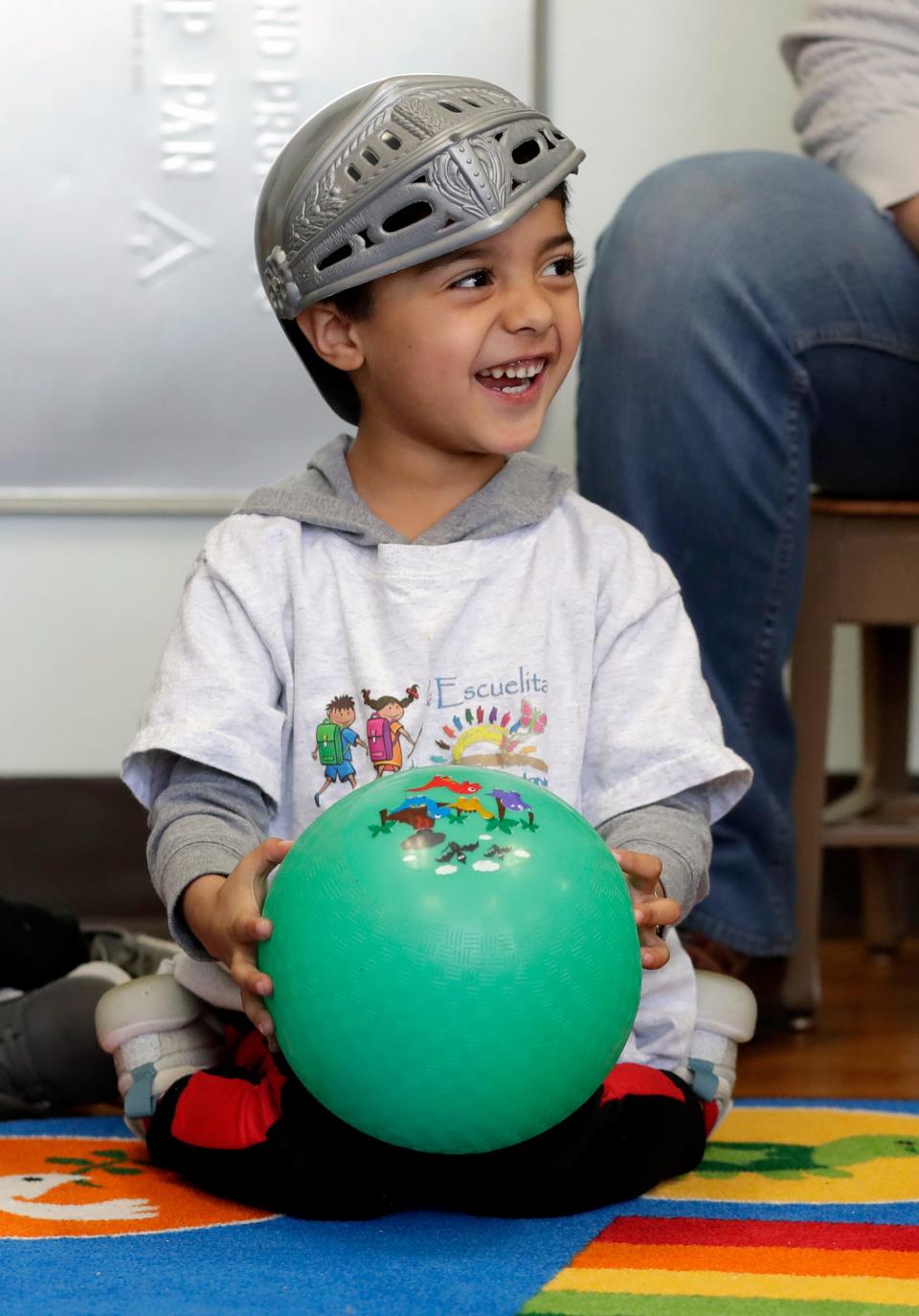
"They go back and forth (between) Spanish and English, and it's OK because they know that they're bilingual and they have this special way of communicating no matter what or where they are," said Norma Zapien, the program's coordinator.
The program is free for families and is open to 3- and 4-year-old kids. To get more information about joining, visit www.casaalba.org/laescuelita.
Here’s where families can find children’s books in languages other than English
If your child goes to school in the Green Bay School District, talk with your child’s librarian about what reading materials are available . If the book isn’t in your child’s library, it can be requested from another school in the district.
At the Brown County Library, families can search the library catalog to see what materials are available across the eight locations in different languages.
Families can also order books online directly from publishers or on Amazon.
Also, many Native American tribes in Wisconsin, such as the Ho-Chunk Nation, have language departments with early literacy materials for kids in their traditional languages.
Danielle DuClos is a Report for America corps member who covers K-12 education for the Green Bay Press-Gazette. Contact her at dduclos@gannett.com or 907-717-6851. Follow on Twitter @danielle_duclos. You can directly support her work with a tax-deductible donation online at www.GreenBayPressGazette.com/RFA or by check made out to The GroundTruth Project with subject line Report for America Green Bay Press Gazette Campaign. Address: The GroundTruth Project, Lockbox Services, 9450 SW Gemini Dr, PMB 46837, Beaverton, Oregon 97008-7105.

CONTINUE YOUR SUPPORT: Thanks to our subscribers for making this coverage possible. Be sure to download our app on the App Store or Google Play. Follow us on social media: Facebook | Twitter | Instagram | Newsletters
This article originally appeared on Green Bay Press-Gazette: This uncommon solution could help boost Green Bay's low reading scores

